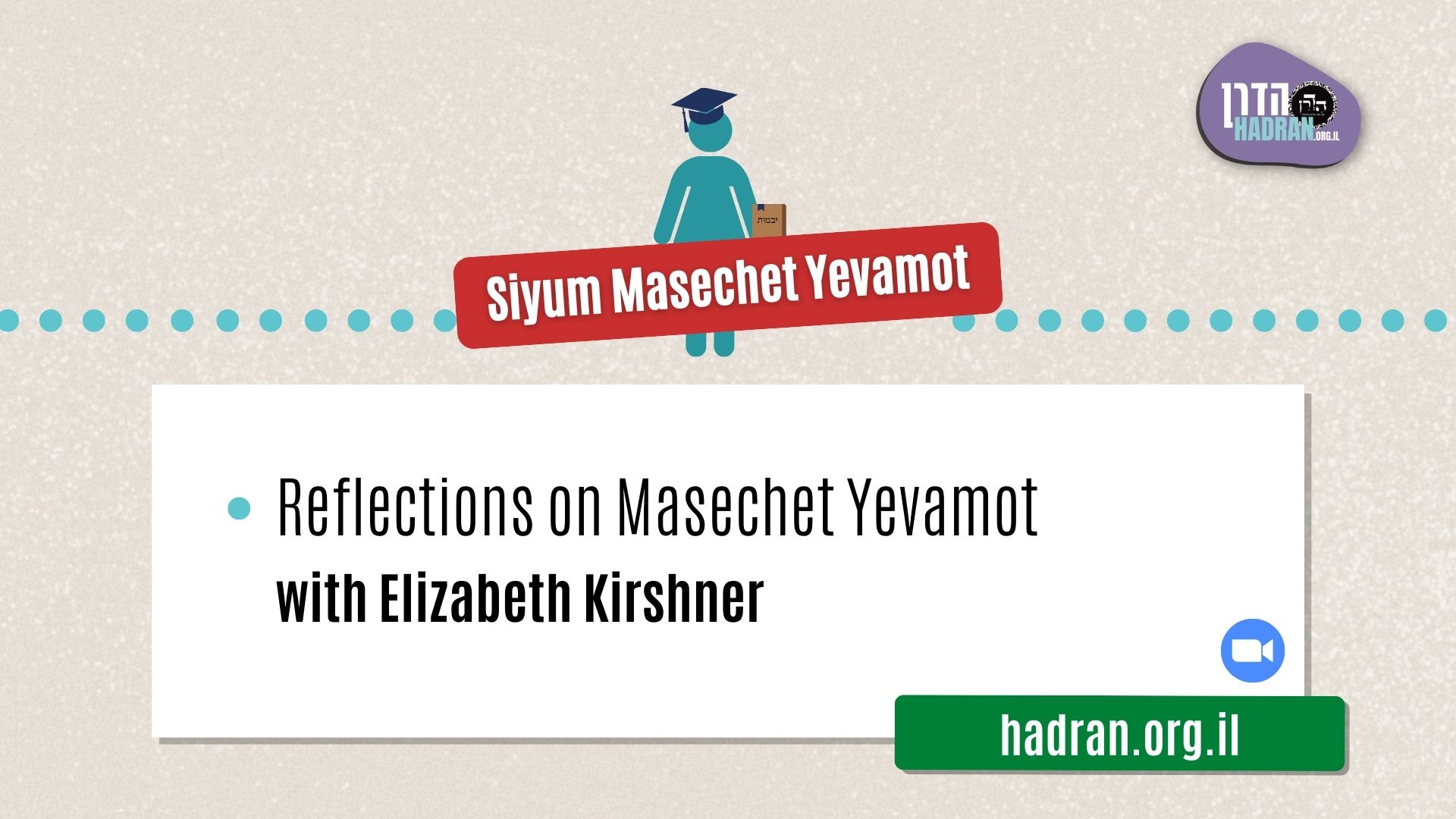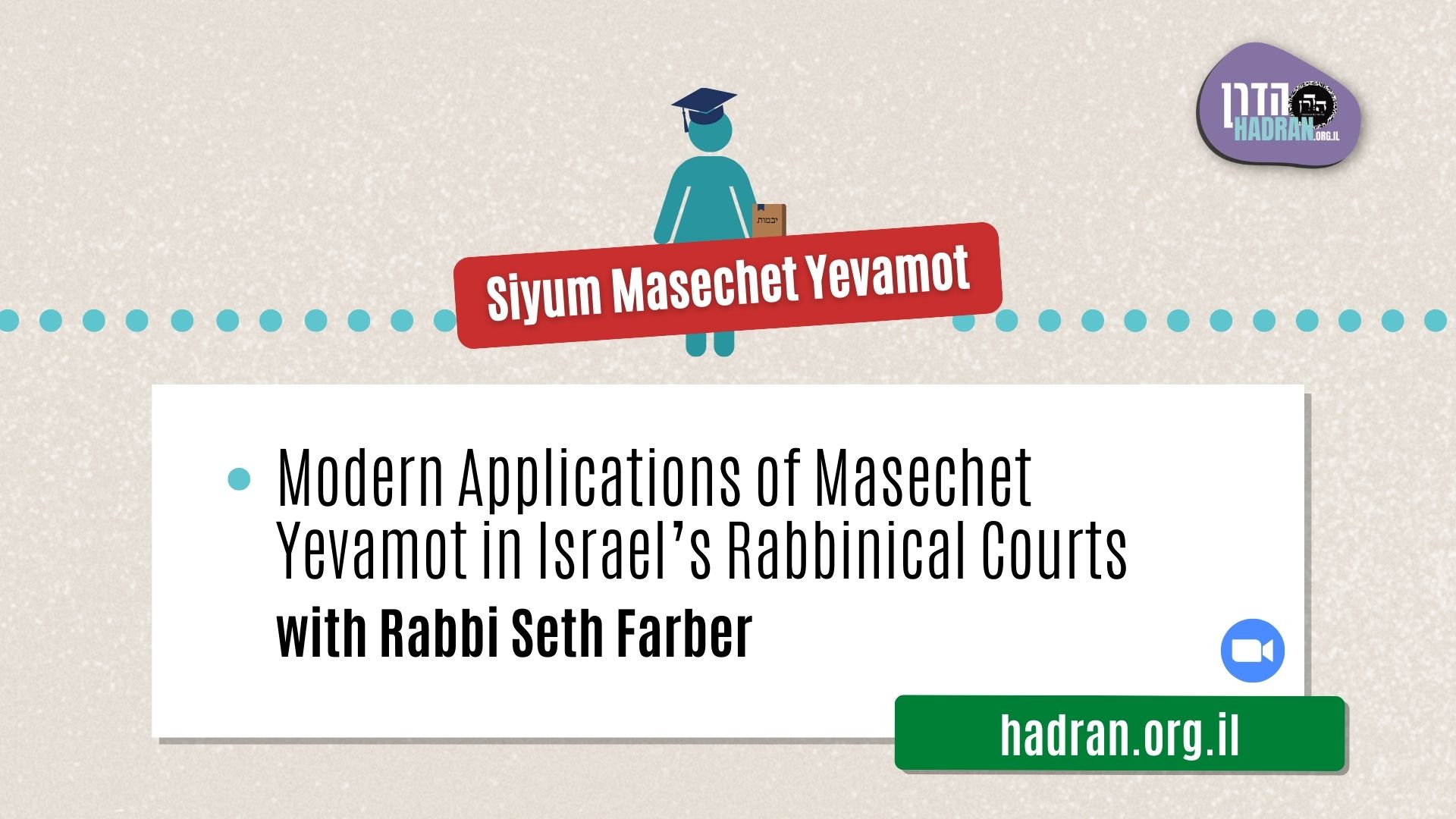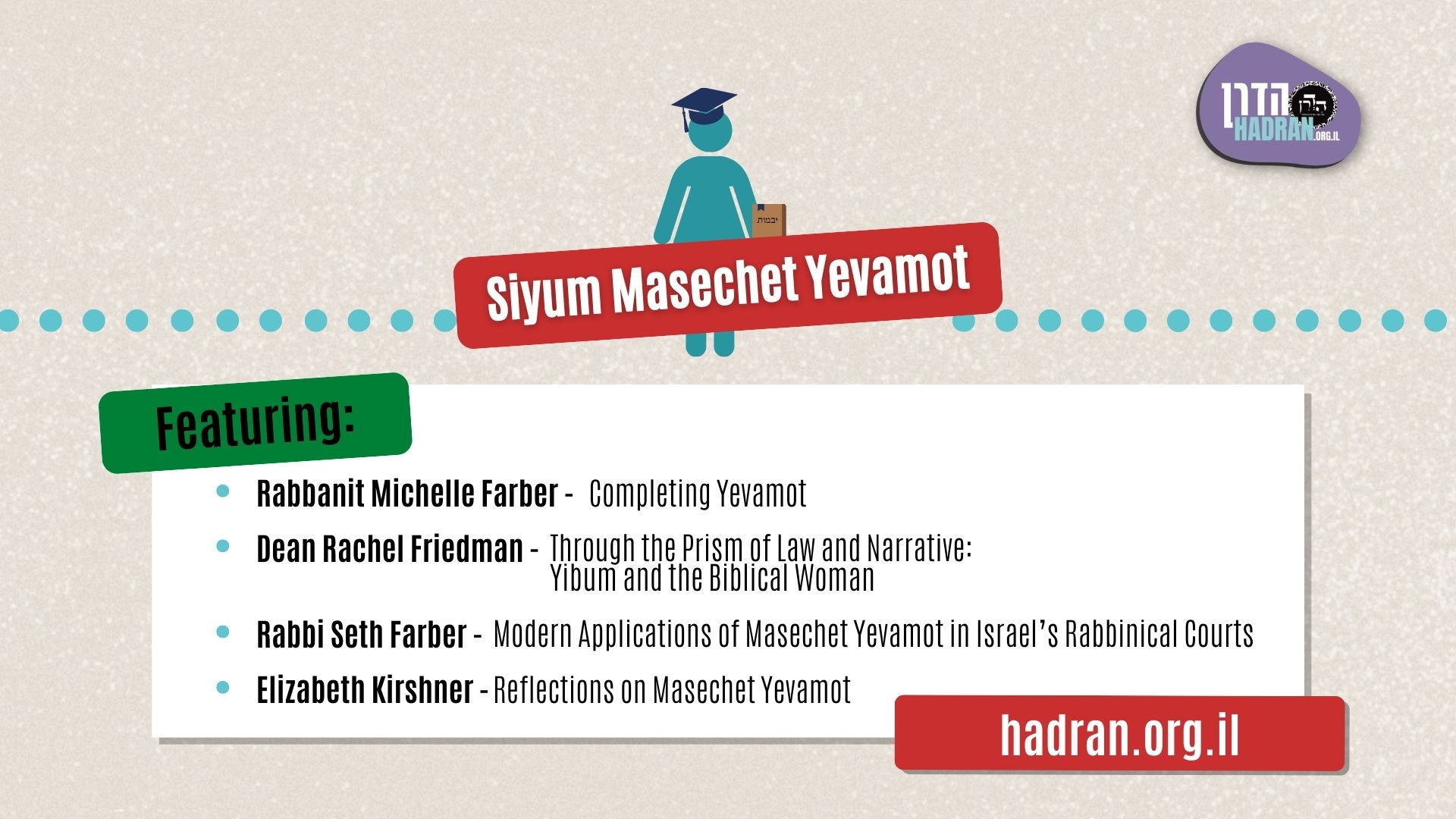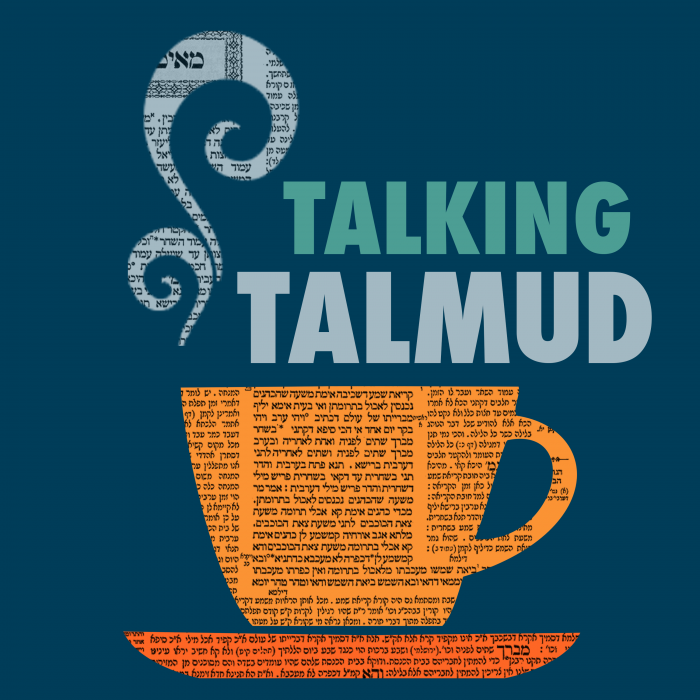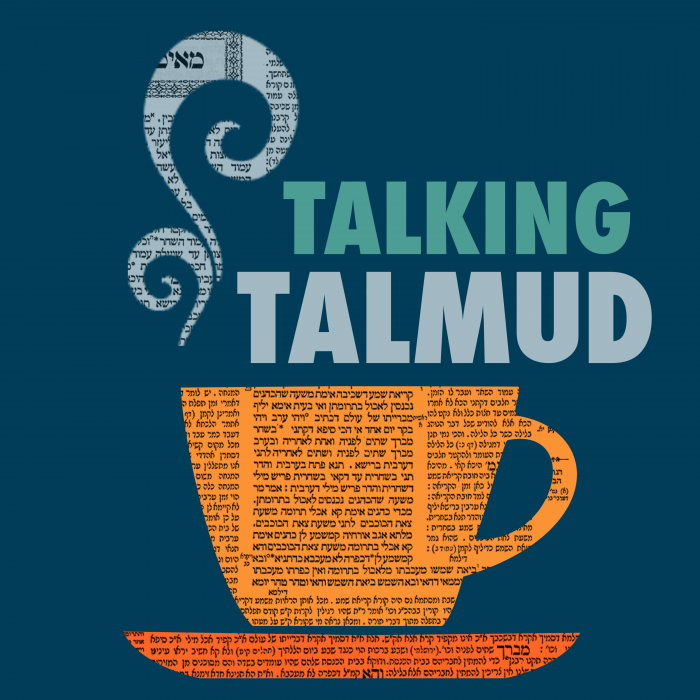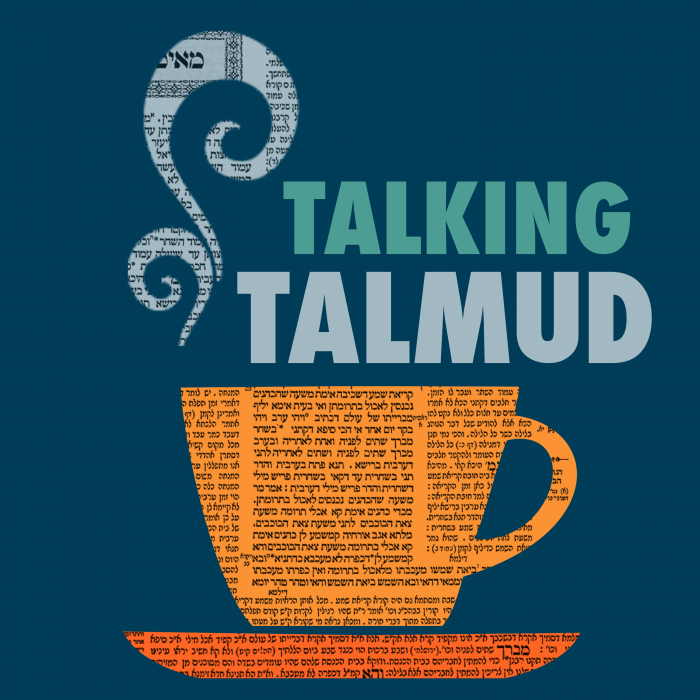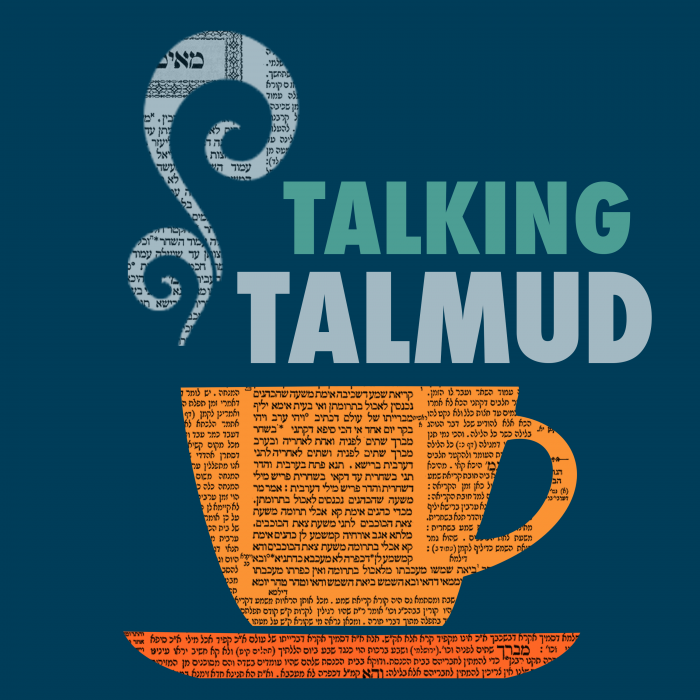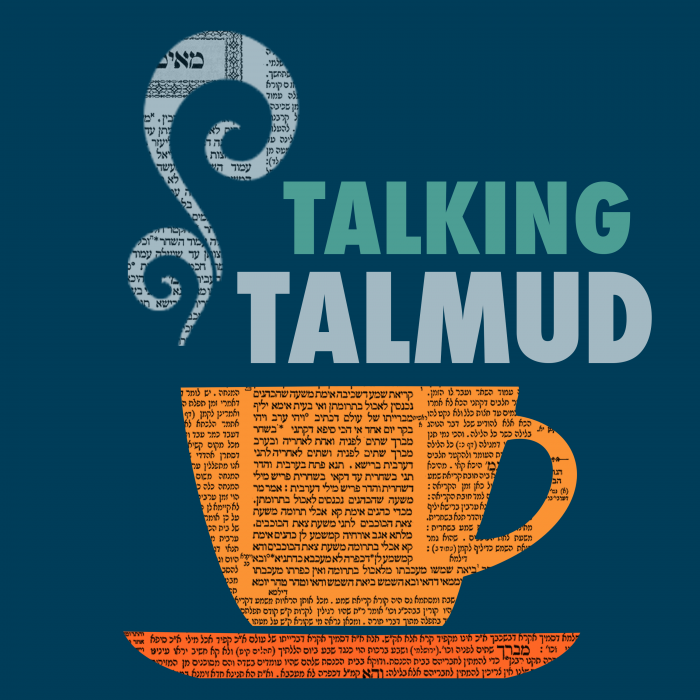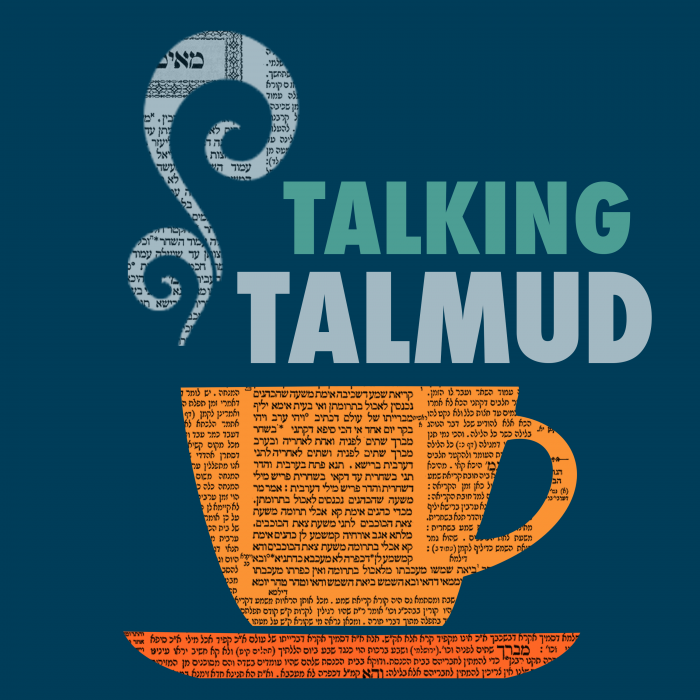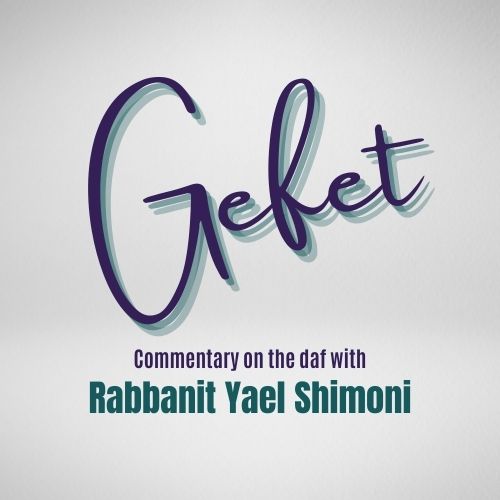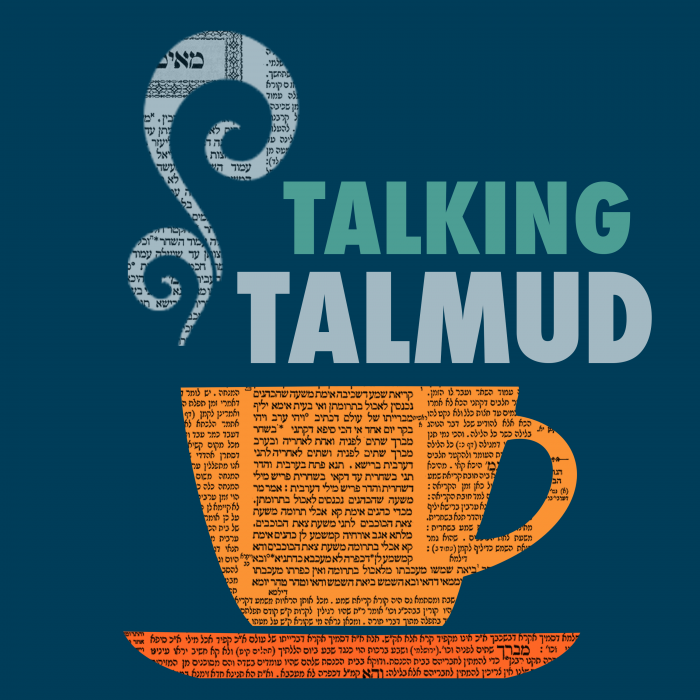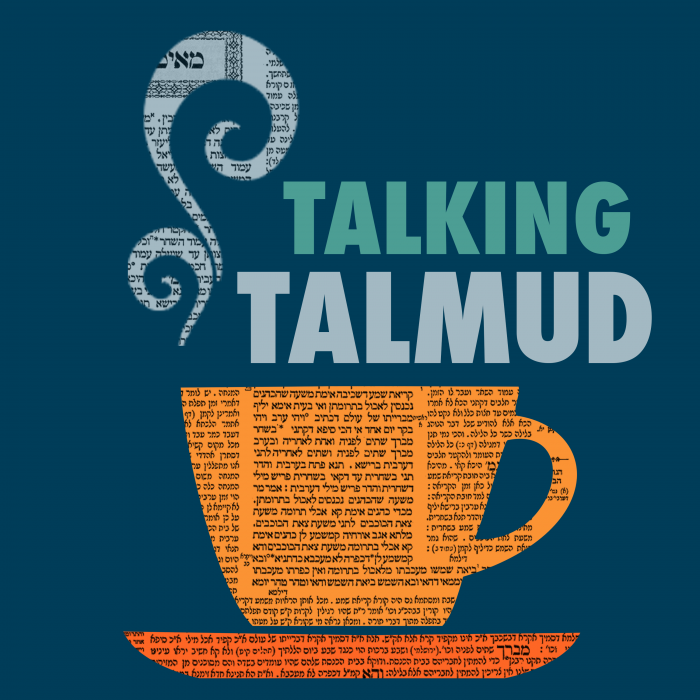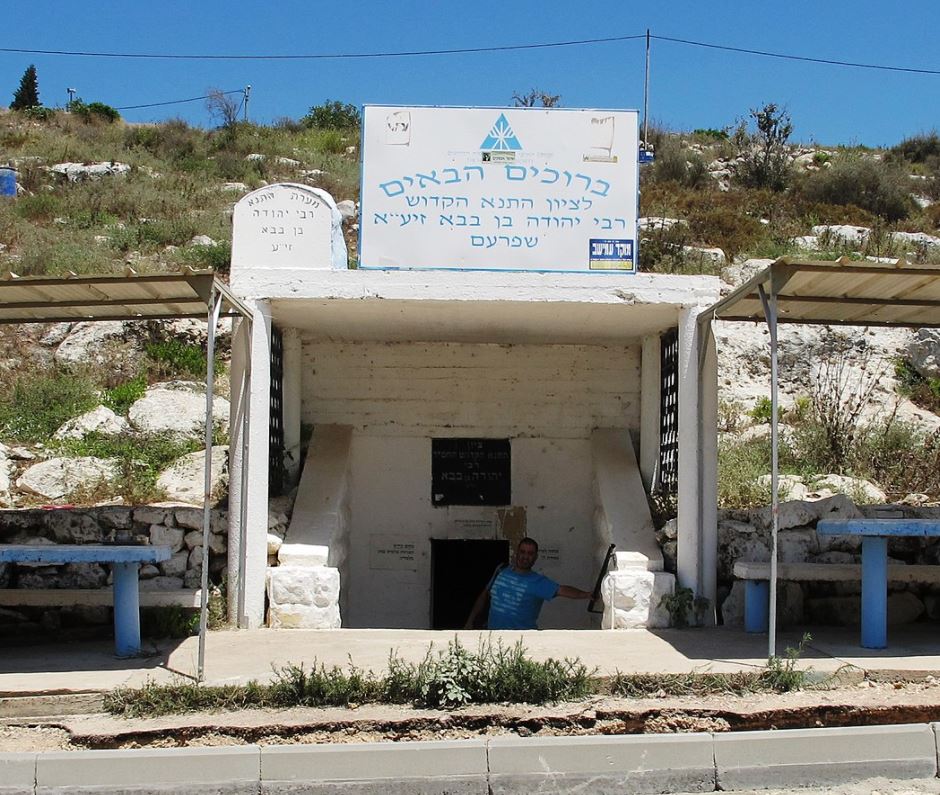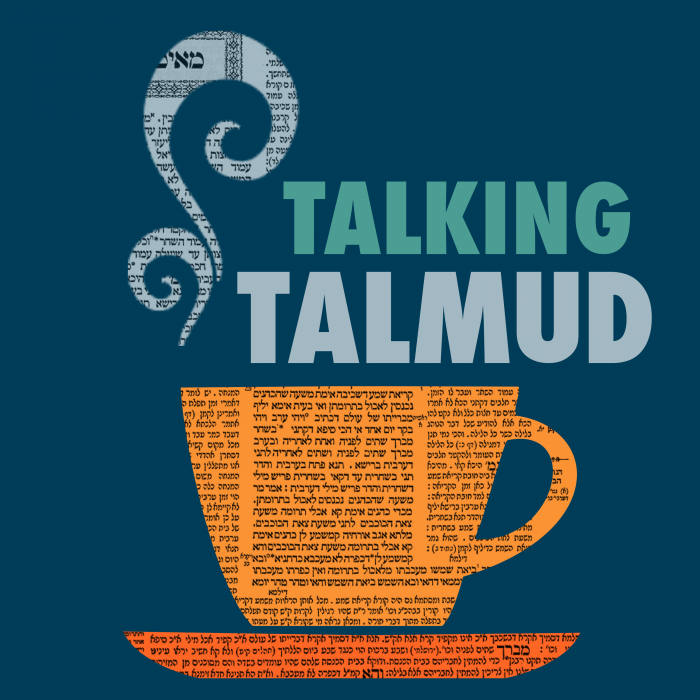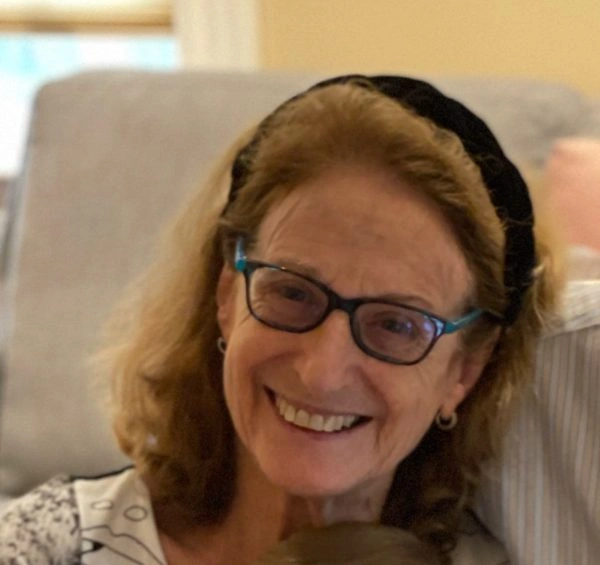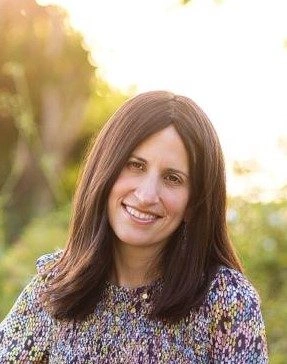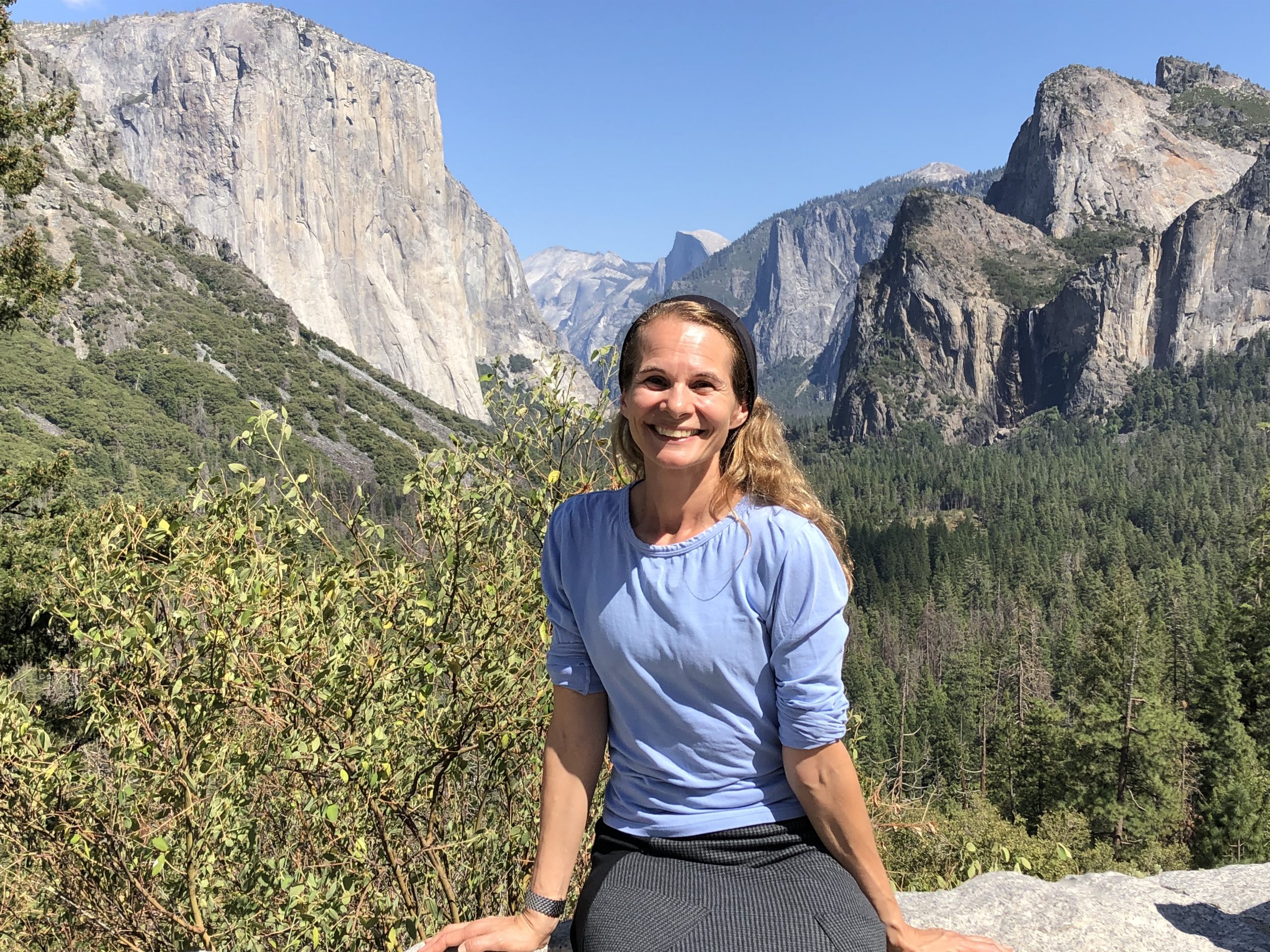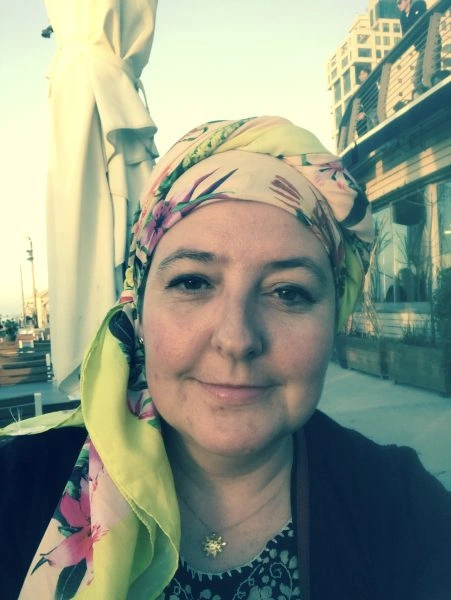Rabbi Avahu said that whenever there is a Mishna with an unattributed opinion and the same topic has a debate in a braita, we hold by the Mishna. A difficulty is raised against this from an unattributed opinion in a Mishna in Kelim 13:8 and it is a source of debate in a braita and yet, we do not hold like the Mishna. Rabbi Avahu answered that this Mishna was an exception to the rule as Rabbi Yochanan and Reish Lakish both held that the Mishna itself was inaccurate. What about the Mishna was inaccurate? The Gemara suggests a number of possibilities until it found an answer that worked – that the Mishna actually ended with the words “this is Rabbi Shimon’s opinion” and therefore was not an unattributed Mishna. There are varying opinions regarding exactly how long the waiting period is for a woman to get betrothed? Does one need three full months or can it be two and a half? If three full months are needed, is the day of death/day of the bethrothal included in the count? Rabbi Yosi said in the Mishna that a widow cannot get engaged immediately because she needs to mourn. A difficulty is raised from laws of Tisha B’av and the days leading up to it as laws of mourning are in effect and yet one can get betrothed. A number of solutions are suggested, some of which emend the text of the Mishna. However, questions are raised against the second emendation of the text. And ultimately all the answers brought are rejected and the difficulty from Tisha B’av is answered by saying there is a tannaitic debate and each source holds by a different opinion. Rav Ashi raises a question on this answer as well and responds by distinguishing between mourning on Tisha B’av and mourning for a dead relative as they are not the same type of mourning.
Yevamot 43
Share this shiur:
Want to dedicate learning? Get started here:


Today’s daily daf tools:
Today’s daily daf tools:
Delve Deeper
Broaden your understanding of the topics on this daf with classes and podcasts from top women Talmud scholars.
New to Talmud?
Check out our resources designed to help you navigate a page of Talmud – and study at the pace, level and style that fits you.
The Hadran Women’s Tapestry
Meet the diverse women learning Gemara at Hadran and hear their stories.
Yevamot 43
וְכִי רַבִּי לֹא שְׁנָאָהּ, רַבִּי חִיָּיא מִנַּיִן לוֹ?
If Rabbi Yehuda HaNasi had not taught that ruling in the Mishna, from where would Rabbi Ḥiyya, his disciple and redactor of the baraitot, have known it? Since the source of the unattributed ruling in the baraita is certainly the dispute recorded in the mishna, its lack of attribution in the baraita only reflects the fact that Rabbi Ḥiyya ruled in accordance with that opinion, but that cannot be used to indicate that it is the accepted halakha.
אֲמַר לֵיהּ, וְהָא תְּנַן: מַסְרֵק שֶׁל פִּשְׁתָּן שֶׁנִּיטְּלוּ שִׁינָּיו, וְנִשְׁתַּיְּירוּ בּוֹ שְׁתַּיִם — טְמֵאוֹת, וְאַחַת — טְהוֹרָה. וְכוּלָּן שֶׁנִּיטְּלוּ אַחַת אַחַת בִּפְנֵי עַצְמָן — טְמֵאוֹת.
Rabbi Naḥum questioned the principle that the halakha is always in accordance with an unattributed ruling in a mishna and said to Rabbi Ḥiyya: Didn’t we learn in a mishna (Kelim 13:8): A comb made for combing beaten flax in preparation for spinning, from which its teeth were removed and only two of its teeth remained in it, is still suitable for combing. It is therefore considered a utensil and will become ritually impure if it comes in contact with ritual impurity. However, if only one tooth remained, so that the comb was no longer suitable for combing, it is no longer considered a utensil and so will remain ritually pure even if it comes in contact with ritual impurity. And with regard to any of the teeth that were individually removed on their own, since they do serve a purpose, e.g., they may be embedded and used as hooks, they are considered utensils and can become ritually impure.
שֶׁל צֶמֶר שֶׁנִּיטְּלוּ שִׁינָּיו אַחַת מִבֵּינְתַיִם — טָהוֹר. נִשְׁתַּיְּירוּ בּוֹ שְׁלֹשׁ בְּמָקוֹם אֶחָד — טָמֵא. הָיְתָה הַחִיצוֹנָה אַחַת מֵהֶן — טָהוֹר. נִיטְּלוּ שְׁנַיִם וַעֲשָׂאָן לְמַלְקֵט — טְמֵאוֹת. אַחַת וְהִתְקִינָהּ לְנֵר אוֹ לְמִיתּוּחַ — טְמֵאָה.
A comb made for combing wool from which every other one of its teeth were removed, so that no two consecutive teeth remained in place, is no longer suitable for combing and so will remain ritually pure. If three teeth remained in it in a single place so that it could still be used for combing, then it could become ritually impure. However, if one of those teeth was the external frame of the comb itself, then it could not function as a comb, and so it will remain ritually pure. If two of the teeth were removed and made into small pincers, then they could become ritually impure. Alternatively, if one of the teeth was removed, and it was prepared in a manner that made it suitable for use in cleaning an oil lamp or for stretching ropes, then it would be considered a utensil and could become ritually impure.
וְקַיְימָא לַן דְּאֵין הֲלָכָה כְּאוֹתָהּ מִשְׁנָה! אֲמַר לֵיהּ: בַּר מִינַּהּ דְּהַהִיא, דְּרַבִּי יוֹחָנָן וְרֵישׁ לָקִישׁ דְּאָמְרִי תַּרְוַיְיהוּ: זוֹ אֵינָהּ מִשְׁנָה.
Rabbi Naḥum posed his question: But we maintain that the halakha is not in accordance with that mishna. This would seem to contradict the principle that the halakha is always in accordance with an unattributed opinion. Rabbi Ḥiyya said to Rabbi Naḥum that the principle applies to all cases apart from this mishna, as with regard to this particular mishna there are Rabbi Yoḥanan and Reish Lakish who both say: This is not an authoritative mishna, and so it cannot be relied upon for a halakhic ruling.
מַאי טַעְמָא? אָמַר רַב הוּנָא בַּר מָנוֹחַ מִשְּׁמֵיהּ דְּרַב אִידִי בְּרֵיהּ דְּרַב אִיקָא: מִשּׁוּם דְּקַשְׁיָא רֵישָׁא לְסֵיפָא. דְּקָתָנֵי: שֶׁל צֶמֶר שֶׁנִּיטְּלוּ שִׁינָּיו אַחַת מִבֵּינְתַיִם — טָהוֹר. הָא נִשְׁתַּיְּירוּ בּוֹ שְׁתַּיִם בְּמָקוֹם אֶחָד — טָמֵא, וַהֲדַר תָּנֵי נִשְׁתַּיְּירוּ בּוֹ שְׁלֹשׁ — טָמֵא. שָׁלֹשׁ — אִין, שְׁתַּיִם — לָא!
The Gemara asks: What is the reason to say that the mishna is not authoritative? Rav Huna bar Manoaḥ said in the name of Rav Idi, son of Rav Ika: It is because the first clause of that mishna contradicts the latter clause, as it teaches: A comb used for wool from which every other one of its teeth were removed is no longer considered a utensil, and so it will remain ritually pure. This implies that were two teeth to remain in it in one place, it could become ritually impure. And then the mishna continues and teaches: If three teeth remained in it in a single place it is still considered a utensil and so it could become ritually impure. This indicates that if there are three, yes, it could become ritually impure, but if there are two, no, it would not become ritually impure.
וּמַאי קוּשְׁיָא? דִּלְמָא הָא בְּגַוּוֹיָיתָא, הָא בְּבָרָיְיתָא.
The Gemara asks: But what is the difficulty? Perhaps this ruling that if two teeth remain it is considered a utensil is referring to the internal teeth, found in the middle of the frame, while that ruling that it is not considered a utensil is referring to the outer teeth, which are adjacent to the frame of the comb, which makes them unsuitable for use.
אֶלָּא מֵהָכָא, דְּקָתָנֵי: וְכוּלָּן שֶׁנִּיטְּלוּ אַחַת אַחַת בִּפְנֵי עַצְמָן — טְמֵאוֹת, וְאַף עַל גַּב דְּלֹא הִתְקִינָהּ. אֵימָא סֵיפָא: אַחַת וְהִתְקִינָהּ לְנֵר אוֹ לְמִיתּוּחַ — טְמֵאָה. הִתְקִינָהּ — אִין, לֹא הִתְקִינָהּ — לָא!
Rather, the difficulty with the mishna is from here, as it teaches: And any of the teeth that were individually removed on their own, since they can serve a useful purpose they are considered utensils and can become ritually impure. And the implication is that this is true even though the tooth was not prepared for that purpose. But say the latter clause as follows: If one of the teeth was removed, and it was prepared in a manner that rendered it suitable for use in cleaning an oil lamp or for stretching ropes, then it would be considered a utensil and could become ritually impure. The implication is that if it was prepared for use, then yes, it would be considered a utensil, but if it was not prepared for use, then no, it would not be considered a utensil.
אָמַר אַבָּיֵי: וּמַאי קוּשְׁיָא? דִּלְמָא הָא בְּקַתַּיְיהוּ, הָא בְּלָא קַתַּיְיהוּ.
Abaye said: But what is the difficulty? Perhaps this ruling, that further preparation is not required before it is considered a utensil, is referring to a case where the teeth were removed with their base, which allows them to be used immediately for various functions, whereas that ruling, that it is considered a utensil only once it is prepared for use, is referring to a case where the teeth were removed without their base and therefore require further preparation before they can be used.
אָמַר רַב פָּפָּא: וּמַאי קוּשְׁיָא? וְדִלְמָא הָא בְּקַטִּינָתָא, הָא בְּאַלִּימָתָא.
Rav Pappa stated an alternative resolution: But what is the difficulty? Perhaps this ruling that further preparation is not required is referring to a case where the teeth were narrow, whereas that ruling that it is considered a utensil only once it is prepared for use is referring to a case where the teeth were thick.
אֶלָּא מִשּׁוּם דִּמְסַיְּימִי בָּהּ דַּוְוקָנֵי: זוֹ רַבִּי שִׁמְעוֹן.
Rather, the reason that the mishna is not accepted as authoritative is not due to some difficulty in the formulation of the mishna, but because those who are exact in their rendition of the tradition conclude this mishna with: This is the statement of Rabbi Shimon. In other words, this mishna is not unattributed but presents the minority opinion of a single Sage, and it is for this reason that it is not accepted as authoritative.
שָׁלַח רַבִּי חִיָּיא בַּר אָבִין: מְאָרְסִין תּוֹךְ שְׁלֹשָׁה, וְכֵן עוֹשִׂים מַעֲשֶׂה.
§ Rabbi Ḥiyya bar Avin sent a message from Eretz Yisrael with regard to the halakha cited in the mishna: One may betroth a woman, but not marry her, within three months of her previous marriage; and so one acts in practice.
וְכֵן הָיָה רַבִּי אֶלְעָזָר מְלַמְּדֵנוּ מִשּׁוּם רַבִּי חֲנִינָא הַגָּדוֹל: רוּבּוֹ שֶׁל רִאשׁוֹן, וְרוּבּוֹ שֶׁל שְׁלִישִׁי, וְאֶמְצָעִי שָׁלֵם.
And so Rabbi Elazar would teach us in the name of Rabbi Ḥanina the Great that the three months are counted as follows: One counts the majority of the days of the first month, and the majority of the third month, and the entire middle month.
אַמֵּימָר שְׁרָא לֵיאָרֵס בְּיוֹם תִּשְׁעִים. אֲמַר לֵיהּ רַב אָשֵׁי לְאַמֵּימָר: וְהָא רַב וּשְׁמוּאֵל דְּאָמְרִי תַּרְוַיְיהוּ: צְרִיכָה לְהַמְתִּין שְׁלֹשָׁה חֳדָשִׁים, חוּץ מִיּוֹם שֶׁמֵּת בּוֹ וְחוּץ מִיּוֹם שֶׁנִּתְאָרְסָה בּוֹ! הַהוּא — לְעִנְיַן מֵינֶקֶת אִיתְּמַר, דְּרַב וּשְׁמוּאֵל דְּאָמְרִי תַּרְוַיְיהוּ: צְרִיכָה לְהַמְתִּין עֶשְׂרִים וְאַרְבָּעָה חֹדֶשׁ, חוּץ מִיּוֹם שֶׁנּוֹלַד בּוֹ, וְחוּץ מִיּוֹם שֶׁנִּתְאָרְסָה בּוֹ.
Ameimar permitted one to betroth a woman on the ninetieth day itself. Rav Ashi said to Ameimar: Didn’t Rav and Shmuel both say that she needs to wait three full months, excluding the day on which the husband died and excluding the day on which she is betrothed? It is apparent that it is still prohibited to betroth a woman on the ninetieth day itself. Ameimar said to him: That which you heard, that the days of the husband’s death and of the betrothal are not included, was stated only with regard to a nursing woman, as it was Rav and Shmuel who both said: A nursing woman needs to wait twenty-four months before being betrothed, excluding the day on which the baby was born and excluding the day on which she is betrothed.
וְהָא הָהוּא דַּעֲבַד סְעוּדַת אֵירוּסִין בְּיוֹם תִּשְׁעִים, וְאַפְסְדֵיהּ רָבָא לִסְעוֹדְתֵּיהּ! הָהִיא, סְעוּדַת נִשּׂוּאִין הֲוַאי.
The Gemara asks: Wasn’t there an incident concerning a certain person who prepared a betrothal feast on the ninetieth day following the death of the woman’s first husband, and Rava caused him to forfeit his feast by prohibiting the betrothal on that day? The Gemara answers: That feast was actually a marriage feast, but had it been a betrothal feast it would have been permitted.
וְהִלְכְתָא: צְרִיכָה לְהַמְתִּין עֶשְׂרִים וְאַרְבָּעָה חוֹדֶשׁ — חוּץ מִיּוֹם שֶׁנּוֹלַד בּוֹ, וְחוּץ מִיּוֹם שֶׁנִּתְאָרְסָה בּוֹ. וּצְרִיכָה לְהַמְתִּין שְׁלֹשָׁה חֳדָשִׁים — חוּץ מִיּוֹם שֶׁמֵּת בּוֹ, וְחוּץ מִיּוֹם שֶׁנִּתְאָרְסָה בּוֹ.
The Gemara summarizes: The halakha is that a nursing mother needs to wait twenty-four months, excluding the day on which the baby was born and excluding the day on which she is betrothed. And if she was widowed but was not nursing, then she needs to wait only three months, excluding the day on which her previous husband died and excluding the day on which she is betrothed.
חוּץ מִן הָאַלְמָנָה וְכוּ׳. אָמַר רַב חִסְדָּא קַל וָחוֹמֶר: וּמָה בִּמְקוֹם שֶׁאָסוּר לְכַבֵּס, מוּתָּר לֵיאָרֵס. מְקוֹם שֶׁמּוּתָּר לְכַבֵּס — אֵינוֹ דִּין שֶׁמּוּתָּר לֵיאָרֵס?!
§ The mishna states that Rabbi Yosei says: All women may be betrothed within three months except for a widow, due to the mourning period she must observe for her deceased husband. Rav Ḥisda questioned the mishna’s ruling and said: Based on an a fortiori inference, it should be permitted for a woman to be betrothed during the thirty-day mourning period for her husband: If during another period of mourning, which the Gemara will specify, when it is prohibited to launder clothes, it is permitted to be betrothed, then during the thirty-day mourning period for a husband, when it is permitted to launder clothes, isn’t it logical that it should also be permitted to be betrothed?
מַאי הִיא, דִּתְנַן: שַׁבָּת שֶׁחָל תִּשְׁעָה בְּאָב בְּתוֹכָהּ — אָסוּר לְסַפֵּר וּלְכַבֵּס, וּבַחֲמִישִׁי — מוּתָּר, מִפְּנֵי כְּבוֹד הַשַּׁבָּת. וְתַנְיָא: קוֹדֶם הַזְּמַן הַזֶּה — הָעָם מְמַעֲטִין בְּעִסְקֵיהֶם, מִלִּישָּׂא וּמִלִּיתֵּן, מִלִּבְנוֹת וְלִנְטוֹעַ. וּמְאָרְסִין אֲבָל לֹא כּוֹנְסִין, וְאֵין עוֹשִׂין סְעוּדַת אֵירוּסִין.
The Gemara explains the cases involved: What is the period of mourning to which Rav Ḥisda is referring? As we learned in a mishna (Ta’anit 26b): During the week in which the Ninth of Av occurs, it is prohibited to cut hair and to launder clothes, but on Thursday it is permitted in deference to Shabbat. And it is taught in a baraita: Prior to this time the public reduce their activities, refraining from business transactions, from building and planting, and they may betroth women but may not marry them, and they may not make a betrothal feast. The Gemara assumes that the baraita is referring to the days immediately preceding the Ninth of Av. Accordingly, during the days prior to the Ninth of Av it is prohibited to launder clothes, but it is permitted to be betrothed. It was upon this period of time that Rav Ḥisda based his a fortiori inference.
כִּי תַּנְיָא הָהִיא, קוֹדֶם דְּקוֹדֶם (תַּנְיָא).
To defend Rav Yosei’s ruling in the mishna, the Gemara explains: When that baraita is taught, it is taught with regard to the period prior to the period that is prior to the Ninth of Av, i.e., the days prior to the week in which the Ninth of Av occurs. It is only then that it is permitted to be betrothed, but during the week in which the Ninth of Av occurs it is prohibited. Therefore, the basis of Rav Ḥisda’s a fortiori inference is undermined.
אָמַר רָבָא: וְקוֹדֶם דְּקוֹדֶם נָמֵי קַל וָחוֹמֶר: וּמָה בִּמְקוֹם שֶׁאָסוּר לִישָּׂא וְלִיתֵּן — מוּתָּר לֵיאָרֵס, מְקוֹם שֶׁמּוּתָּר לִישָּׂא וְלִיתֵּן — אֵינוֹ דִּין שֶׁמּוּתָּר לֵיאָרֵס?!
Rava said: From the period prior to the period that is prior to the Ninth of Av, a challenge to Rabbi Yosei’s ruling can also be advanced based on an a fortiori inference, as follows: If in a period of mourning when it is prohibited to conduct business transactions, it is permitted to be betrothed, then during the thirty-day mourning period for a husband, when it is permitted to conduct business transactions, isn’t it logical that it should also be permitted to be betrothed?
לָא תֵּימָא: דְּרַבִּי יוֹסֵי אוֹמֵר כׇּל הַנָּשִׁים יִתְאָרְסוּ, אֶלָּא אֵימָא: כָּל הַנָּשִׁים יִנָּשְׂאוּ.
The Gemara accepts the conclusion of this a fortiori inference and therefore concludes: Do not say that Rabbi Yosei says: All women may be betrothed within three months; rather, emend his statement to say: All women may be married within three months except for a widow. However, even Rabbi Yosei agrees that it is permitted for a widow to be betrothed during this period.
וְלֵית לֵיהּ לְרַבִּי יוֹסֵי לְהַבְחִין?
The Gemara asks: But does Rabbi Yosei not accept that there is a decree to wait three months in order to distinguish between the seed of the first and second husbands? According to the Gemara’s emendation of his statement, it would appear there is no case in which Rabbi Yosei applies the decree.
לֵית לֵיהּ. וְאִיבָּעֵית אֵימָא: לְעוֹלָם אִית לֵיהּ, וְאֵימָא, רַבִּי יוֹסֵי אוֹמֵר: כׇּל אֲרוּסוֹת גְּרוּשׁוֹת יִנָּשְׂאוּ.
The Gemara answers: Indeed, he does not accept the decree. And if you wish, say that actually, he does accept the decree and applies it in the case of a married woman who was divorced. And with regard to the challenge to his opinion from the a fortiori inference, emend the mishna and say: Rabbi Yosei says that all women who were only betrothed to their previous husbands and then divorced may be married within three months, since the reason to wait does not apply in this case.
אִי הָכִי, הַיְינוּ רַבִּי יְהוּדָה? אִיכָּא בֵּינַיְיהוּ נְשׂוּאָה לֵיאָרֵס. רַבִּי יְהוּדָה סָבַר: נְשׂוּאָה מוּתֶּרֶת לֵיאָרֵס. וְרַבִּי יוֹסֵי סָבַר: נְשׂוּאָה אֲסוּרָה לֵיאָרֵס.
The Gemara asks: If so, then this opinion of Rabbi Yosei is identical to the opinion of Rabbi Yehuda. What difference is there between them? The Gemara answers: There is a practical difference between them in the case of a woman who was married to her previous husband and seeks to be betrothed. Rabbi Yehuda holds that it is permitted to betroth a woman who was married to her previous husband without first waiting three months. And Rabbi Yosei holds that it is prohibited to betroth a woman who was married to her previous husband without first waiting three months.
וְסָבַר רַבִּי יוֹסֵי נְשׂוּאָה אֲסוּרָה לֵיאָרֵס? וְהָתַנְיָא, רַבִּי יוֹסֵי אוֹמֵר: כׇּל הַנָּשִׁים יִתְאָרְסוּ, חוּץ מִן הָאַלְמָנָה מִפְּנֵי הָאִיבּוּל, וְכַמָּה אִיבּוּל שֶׁלָּהּ — שְׁלֹשִׁים יוֹם. וְכוּלָּן לֹא יִנָּשְׂאוּ עַד שֶׁיְּהוּ לָהֶן שְׁלֹשָׁה חֳדָשִׁים.
The Gemara asks: But does Rabbi Yosei really hold that it is prohibited to betroth a woman who was married to her previous husband without first waiting three months? Isn’t it taught in a baraita: Rabbi Yosei says that all women may be betrothed without waiting except for a widow, due to the mourning period she must observe for her deceased husband; and how long is her mourning period? It is thirty days. And none of them may be married until they have waited three months.
הַאי, מַאי קוּשְׁיָא? אִילֵּימָא דְּקָתָנֵי, רַבִּי יוֹסֵי אוֹמֵר: כׇּל הַנָּשִׁים יִתְאָרְסוּ — מִי אַלִּימָא מִמַּתְנִיתִין, דְּאוֹקֵימְנָא בַּאֲרוּסוֹת גְּרוּשׁוֹת יִנָּשְׂאוּ, הָכָא נָמֵי: כׇּל אֲרוּסוֹת גְּרוּשׁוֹת יִנָּשְׂאוּ.
The Gemara clarifies the question: What difficulty does this baraita pose? If we say that the baraita teaches: Rabbi Yosei says that all women may be betrothed without waiting, is the baraita stronger than the mishna that was established as teaching that women who were only betrothed to their previous husbands and then divorced may be married within three months? Here, too, the baraita could be established as teaching that all women who were only betrothed to their previous husbands and then divorced may be married within three months.
אֶלָּא מִסֵּיפָא, דְּקָתָנֵי: וְכוּלָּן לֹא יִנָּשְׂאוּ עַד שֶׁיְּהוּ לָהֶן שְׁלֹשָׁה חֳדָשִׁים. אִינְּסוֹבֵי הוּא דְּלָא, הָא אִיתְּרוֹסֵי — שַׁפִּיר דָּמֵי!
Rather, the difficulty arises from the latter clause that teaches: And none of them may marry until they have waited three months. This implies that Rabbi Yosei holds that it is specifically marrying that is not permitted, but betrothing seems well and is permitted. This challenges the Gemara’s original claim that Rabbi Yosei disagrees with Rabbi Yehuda on this point.
אָמַר רָבָא: תָּרֵיץ וְאֵימָא הָכִי, רַבִּי יוֹסֵי אוֹמֵר: כׇּל אֲרוּסוֹת גְּרוּשׁוֹת יִנָּשְׂאוּ, חוּץ מִן הָאַלְמָנָה, מִפְּנֵי הָאִיבּוּל. וְכַמָּה אִיבּוּל שֶׁלָּהּ — שְׁלֹשִׁים יוֹם. וּנְשׂוּאוֹת לֹא יִתְאָרְסוּ עַד שֶׁיְּהֵא לָהֶן שְׁלֹשָׁה חֳדָשִׁים.
Rava said: Resolve the difficulty and emend Rabbi Yosei’s statement to say this: Rabbi Yosei says that all women who were only betrothed to their previous husbands and then divorced may marry within three months except for a widow, due to the mourning period she must observe for her deceased husband. And how long is her mourning period? It is thirty days. And women who were married to their previous husbands may not be betrothed until they have waited three months.
וְאַלְמָנָה מִן הָאֵירוּסִין מִי אִית לַהּ אִיבּוּל? וְהָתָנֵי, רַבִּי חִיָּיא בַּר אַמֵּי: אִשְׁתּוֹ אֲרוּסָה — לֹא אוֹנֵן וְלֹא מִיטַּמֵּא לָהּ. וְכֵן הִיא — לֹא אוֹנֶנֶת וְלֹא מִיטַּמְּאָה לוֹ. מֵתָה — אֵינוֹ יוֹרְשָׁהּ. מֵת הוּא — גּוֹבָה כְּתוּבָּתָהּ!
The Gemara asks: But does a woman who became a widow from betrothal have to observe a mourning period for her husband? Didn’t Rabbi Ḥiyya bar Ami teach in a baraita: If one’s wife to whom he was betrothed died, he does not observe a period of acute mourning for her, and if he is a priest he is not permitted to become ritually impure for her. And similarly, if he dies, she does not observe a period of acute mourning for him and she does not become ritually impure for him. If she dies, he does not inherit from her. If he dies, she collects payment of her marriage contract. The baraita demonstrates that a widow is required to mourn her husband only if she was married to him and not merely betrothed. If so, clearly Rabbi Yosei’s ruling in the mishna is referring to married women. Accordingly, all of the Gemara’s emendations of Rabbi Yosei’s statement, in order to defend his statement from Rav Ḥisda’s a fortiori inference, are refuted.
אֶלָּא, תַּנָּאֵי הִיא. דְּתַנְיָא: מֵרֹאשׁ חֹדֶשׁ וְעַד הַתַּעֲנִית הָעָם מְמַעֲטִין מֵעִסְקֵיהֶן, מִלִּישָּׂא וּמִלִּיתֵּן, מִלִּבְנוֹת וְלִנְטוֹעַ, וּמִלֵּיאָרֵס וּמִלִּישָּׂא. שַׁבָּת שֶׁחָל תִּשְׁעָה בְּאָב בְּתוֹכָהּ — אָסוּר לְסַפֵּר וּלְכַבֵּס (וְאָסוּר לֵיאָרֵס). וְיֵשׁ אוֹמְרִים: כׇּל הַחֹדֶשׁ אָסוּר.
Rather, it must be that the question of whether it is permitted to betroth a woman during the period prior to the week of the Ninth of Av is subject to a dispute between tanna’im. As it is taught in a baraita: From the New Moon of Av and until the fast on the ninth, the public reduces its activities, refraining from business transactions, from building and planting, and from betrothing and marrying. During the week in which the Ninth of Av occurs, it is prohibited to cut hair and to launder clothes, and it is prohibited to be betrothed. And some say: It is prohibited for the entire month. The Gemara’s challenge to Rabbi Yosei’s opinion that it is prohibited for a widow to be betrothed during her mourning period was based on an a fortiori inference that assumes that it is permitted to be betrothed during the mourning period preceding the week of the Ninth of Av. However, since this ruling is subject to a dispute, Rabbi Yosei could reject the a fortiori inference by stating that he holds in accordance with the opinion that it is in fact prohibited to be betrothed during that period.
מַתְקֵיף לַהּ רַב אָשֵׁי: מִמַּאי דְּלֵיאָרֵס, לֵיאָרֵס מַמָּשׁ? דִּלְמָא לְמִיעְבַּד סְעוּדַת אֵירוּסִין הוּא דְּאָסוּר, הָא לֵיאָרֵס — שַׁפִּיר דָּמֵי.
Rav Ashi strongly objects to this: From where is it known that when the baraita prohibits one to be betrothed, it is referring to actually betrothing? Perhaps it is only to make a betrothal feast that is prohibited, but merely to be betrothed seems well and is permitted.
אִי הָכִי, מִלִּישָּׂא (לִינָּשֵׂא) נָמֵי, לְמֶיעְבַּד סְעוּדַת נִשּׂוּאִין הוּא דְּאָסוּר, הָא לִישָּׂא שַׁפִּיר דָּמֵי? הָכִי הַשְׁתָּא?! בִּשְׁלָמָא נִשּׂוּאִין בְּלֹא סְעוּדָה — אִיכָּא שִׂמְחָה, אֶלָּא אֵירוּסִין בְּלֹא סְעוּדָה — מִי אִיכָּא שִׂמְחָה?
The Gemara questions Rav Ashi’s objection: If so, then with regard to the prohibition against marrying as well one could make the same claim: With regard to the prohibition to marry, too, it is only to make a marriage feast that is prohibited, but merely to marry seems well and is permitted. The Gemara rejects its question: How can these cases be compared? Granted, from a marriage, even without a feast, there is joy, but from a betrothal without a feast, is there any joy? It is merely a legal ceremony.
אֶלָּא אָמַר רַב אָשֵׁי: שָׁאנֵי אֲבֵילוּת חֲדָשָׁה מֵאֲבֵילוּת יְשָׁנָה, וְשָׁאנֵי אֲבֵילוּת דְּרַבִּים מֵאֲבֵילוּת דְּיָחִיד.
Rather, Rav Ashi stated a different resolution of Rav Yosei’s opinion: New mourning, i.e., the mourning for a relative who has just passed away, is different from old mourning, i.e., the mourning over historic events such as the destruction of the Temple, and it is appropriate to be more lenient in the latter. And the mourning of the public is different from the private mourning of the individual, and it is appropriate to be more stringent in the latter. As such, it is not possible to form an a fortiori inference from the halakhot of mourning for the Temple to those of a wife mourning for her husband.
מַתְנִי׳ אַרְבָּעָה אַחִין נְשׂוּאִין אַרְבַּע נָשִׁים וָמֵתוּ, אִם רָצָה הַגָּדוֹל שֶׁבָּהֶם לְיַיבֵּם אֶת כּוּלָּן — הָרְשׁוּת בְּיָדוֹ.
MISHNA: In a case of four brothers married to four women and some of the brothers died childless, their wives thereby become yevamot. If the eldest of the brothers who survived wished to consummate the levirate marriage with all of his yevamot, he has permission to do so.
מִי שֶׁהָיָה נָשׂוּי לִשְׁתֵּי נָשִׁים וּמֵת — בִּיאָתָהּ אוֹ חֲלִיצָתָהּ שֶׁל אַחַת מֵהֶן פּוֹטֶרֶת צָרָתָהּ.
In the case of one who was married to two women and died childless, the intercourse or ḥalitza of either one of the wives with the yavam releases her rival wife from the levirate bond, and the rival wife need not enter into levirate marriage or perform ḥalitza.


